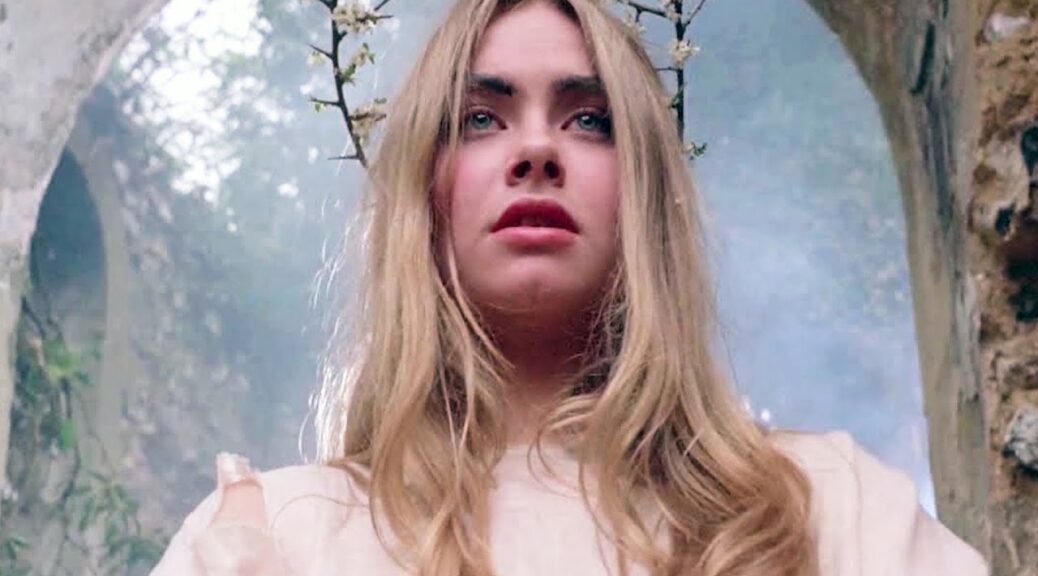Woodlands Dark and Days Bewitched: A History of Folk Horror
by Hope Madden
Every so often you come across a movie and think it must have been made specifically for you. In my case, that film is Kier-La Janisse’s 3-hour documentary Woodlands Dark and Days Bewitched: A History of Folk Horror.
Yes, that does seem like a very big time commitment to folk horror, but Janisse’s film repays your undertaking with not only an incredibly informative documentary but an engaging, creepy and beautifully made film.
Dividing her topic into chapters, Janisse portions out information theme by theme. And while this essay-style documentation is driven by expert commentary, the filmmaker surrounds the scholarly material with beguiling imagery.
Every chapter has its own look and feel, each one opening with an appropriately bewitching bit of rhyme. Then it leads you through a clearly articulated and fairly comprehensive examination of certain moments in folk horror. Janisse opens on the big three, The Unholy Trinity–Blood on Satan’s Claw, Witchfinder General and The Wicker Man—as a way to ease us into the conversation by pinning major themes on well-known films.
She goes on to explore TV and written tales tangentially, though her focus is always primarily on film, taking us from The Wicker Man through Midsommar. In between, she introduces dozens of underseen films and traces not only the history of folk horror but the societal anxieties that these films represent.
And while many may think mainly of British films of the 1960s and 70s for this category, Janisse presents an intriguing global history that unveils universal primal preoccupations from England to Argentina, the US to Lapland and beyond.
Dry as that may sound, between the snippets of the movies themselves and the fluid, often creepy presentation, Woodlands Dark and Days Bewitched becomes as transfixing a film as those it dissects. And it digs deep, into obscure titles new and old. Border! White Reindeer! Onibaba! Viy! Prevenge!
Bonus: You can find a gorgeous array of folk horror streaming on Shudder this month, including The Wicker Man, Blood on Satan’s Claw and Witchfinder General.
There are so many, you can’t blame even a 3-hour film for leaving some out. Here are a few masterpieces glimpsed but not discussed and well worth your time:
And even then, there are some favorites not discussed at all that you might want to check out:
How can three hours of folk horror discussion not be enough? It’s a question that points to what may be the greatest strength of Janisse’s film. Like any truly strong documentary, her film not only covers its topic comprehensively, it inspires you to dig deeper on your own time.


